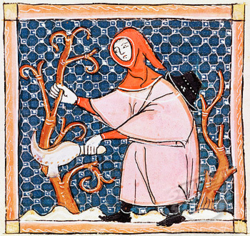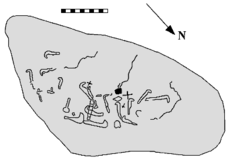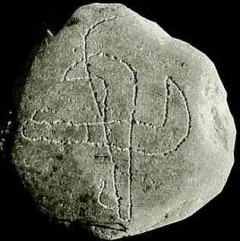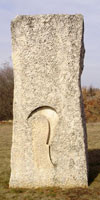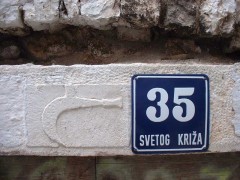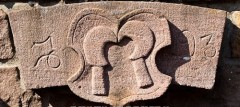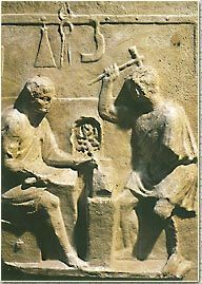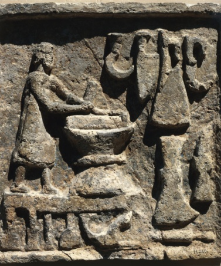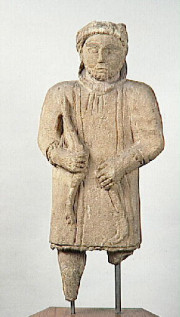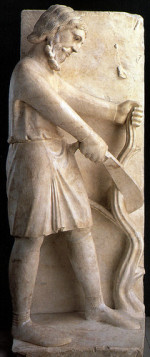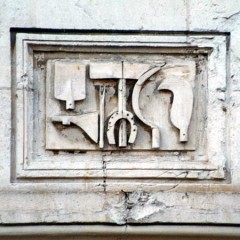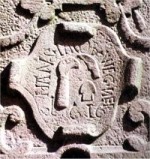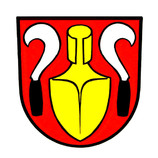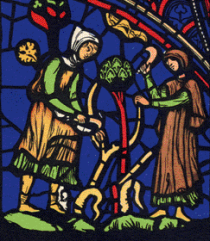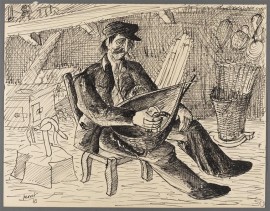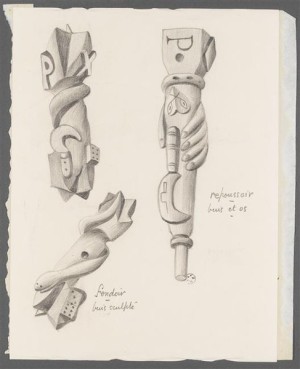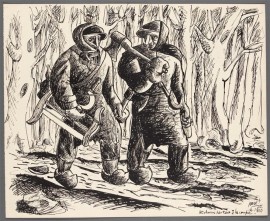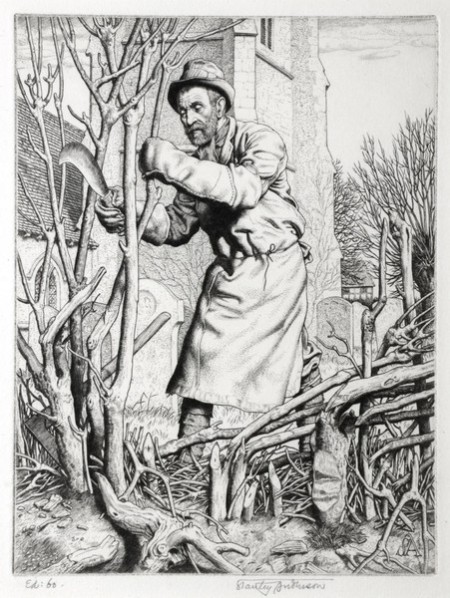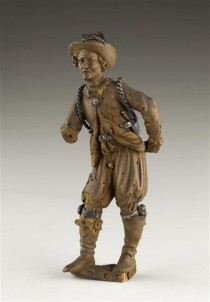Images of stone, glass, paper etc..... (NEW)
The billhook has been recorded in many ways: primitive carvings found on stones in northern Italy; door lintels of the houses of winegrowers in Alsace; boundary stones in Germany; stained glass windows in cathedrals; in illuminated manuscripts of the Middle Ages and in paintings and engravings.
All serve to illustrate the shapes of billhooks used in various countries...
A sketch of the 'Ripani dei Pennati' at Monte Gabberi, Camaiore, Lucca in north west Italy, showing a variety of shapes of 'pennati & roncole'.
"Vuillafans - la fabrication des paniers à rémonter la terre" by René Perrot - 1943. Vuillafins in the Doubs department of France was a centre for basket making. French artist Perrot René (1912 to 1979) made many sketches of traditional craftspersons. Behind the 'vannier' (basketmaker) is a small 'serpette' used to trim the 'brins' or osiers. Soil that was washed down the slopes of the vineyards by the rain had to be carried by hand back to the top of the slope, and placed around the base of the vines. The basket maker is making the baskets in which the soil is carried.
Another drawing by Perrot - 'Bûcherons partant à la coupe' - 1943. Note the 'serpes' tucked into the belts of the woodcutters. Perrot was born in Cuse, a small village in Doubs. During WW2, from 1942 onwards he toured France on behalf of the Musée des Arts et Traditions Populaires, producing over 500 sketches and water-colours.
"The hedger in a country churchyard" c 1935-1940 - a print by the artist and engraver Stanley Anderson CBE RE (1884 to 1966) . Bristol born Anderson is probably best known for his 20 year series of detailed engravings of Oxfordshire and Buckinghamshire craftsmen and women that he started in 1933 after he bought a cottage and moved to Towersey, near Thame in Oxfordshire. Note the billhook used to partially cut through the saplings in the hedge, and the thick leather glove worn on the left hand to protect from the thorns found on quickthorn and hawthorn.
This worm-eaten wooden statue of a 'colporteur' is in the Musée de la Rennaissance at Ecoeun (north of Paris), although missing his right hand and his backpack, he still has his 'serpette' tucked into his belt under his left arm. A coleporter, or peddler (also pedlar), carried goods (and news) from village to village using mules or, in very mountainous regions where there were only footpaths, on his back. His billhook would have been used to make shelters or cut firewood for the night - maybe even to defend himself with.
